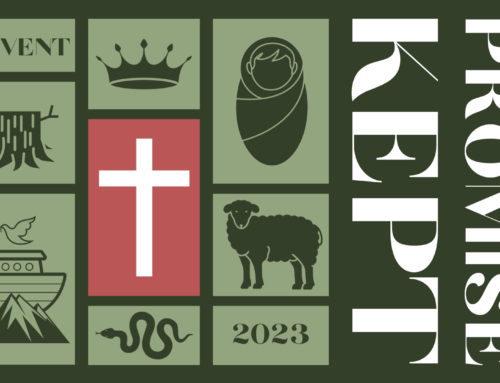Differences in English Bible Translations
by Pastor Josh Wamble
As you probably know, the bible was not originally written in English. Most of the Old Testament was written in Hebrew, and most of the New Testament was written in Greek. Several chapters in Ezra and Daniel as well as a few words and phrases in the New Testament were written in Aramaic. Many dedicated scholars, pastors, missionaries, and other believers have studied these original languages and devoted their lives to translating the different parts of the bible into languages that can be understood today.
About 500 years ago, men like William Tyndale, Myles Coverdale, John Wycliffe, and others risked their lives to translate the bible into English for the first time. Their motivation was to make it so that the regular person could read the bible for himself instead of having his biblical knowledge limited to what the priest told him it said. These men became convinced that if regular people were allowed to read the bible and preach the bible, God would use it to change lives. William Tyndale famously said, “I defy the pope and all his laws. If God spares my life, I will have it so that a boy that drives the plow knows more of the scriptures than [he] does.” Tyndale was convicted of heresy (for translating the bible) and strangled. Then his dead body was burned. John Wycliffe died of a stroke. The Catholic church allowed him to be buried because his was so loved by the people. However, about 30 years later, they dug up his body, burned his bones, and drowned the ashes in water.
Today, there are 7,388 languages spoken in the world. The full bible has been translated into only 724 of those languages. Another 1,617 have the New Testament only. 1,248 have some individual books of the bible. There are still 3,799 languages without the bible. In most of these cases, translation work has not even begun. More information about these statistics and the status of bible translation work around the world can be found here.
How different the case is for those of us who speak English! There are an estimated 900 different English translations of the bible (or parts of the bible)! We might ask, “Why are there so many?” and “Wouldn’t some of that effort be better spent working on languages that don’t have the bible?” Those are legitimate questions, but that this article will not be answering them. Instead, I want us to think about the English translations we do have and how they differ from each other. Not all English translations are equal. Some are better than others. Some are more faithful to the original than others. All 900 translations can be grouped into one of 4 categories, and I want us to briefly think about them below. There is some overlap in these categories; so, it is probably better to think of them as a continuum instead of hard boundaries. The picture above helps us to see what I mean.
1. Interlinear
Interlinear bibles are written in Hebrew or Greek and English. They are called interlinears because the lines are interchanged between the different languages. An interlinear New Testament will have a line in Greek then a line in English. The next line will be in Greek again followed by another English line. Each pair of lines go together. The first line will be in Greek. The next line in English will be arranged so that the English word is directly below the Greek word that it translates. These types of bibles are helpful for people who have some knowledge of Greek or Hebrew, but they are hard to read as a simple English translation. The words are in the order of the Greek or Hebrew bible which is not always the same order they would appear in English, and they are not very smooth or grammatically correct English.
2. Word for Word (Formal Equivalent)
ESV, NASB, KJV, NKJV, HCSB, etc.
In a word for word translation, the translator is attempting to render each Hebrew or Greek word into a corresponding English word. The goal is to take seriously not only the message of the book but the actual words that were chosen by the original author. If the bible is inspired by God, then we should take the actual words he inspired seriously and try to be as accurate as possible when translating those words into English or any other language.
These translations are good for reading, studying, teaching, and preaching. However, there are translators who do not think this is the best approach. They offer several criticisms of word for word translations. These translations are often charged with being “choppy” or “wooden.” They don’t always flow smoothly when reading them—especially when reading them out loud. Another criticism is that they are often hard to read because they don’t sound like natural English. The phrases or sentences are not always expressed the way that a natural English speaker would say them. Finally, sometimes translators make the argument that the meaning of a biblical passage is found in the sentences or paragraphs and not in the individual words. That takes us to the next category of English translations.
3. Thought for Thought (Dynamic or Functional Equivalent)
NIV, NLT, GNT, CEV, etc.
In a thought for thought translation, the translator is attempting to translate each Hebrew or Greek thought into a corresponding English thought. The meaning or message of the bible is expressed in words working together to form phrases and sentences and paragraphs not the individual words themselves. These translators want to help the English reader to understand what the original author meant by translating each Hebrew or Greek thought into an English thought not necessarily translating each Hebrew or Greek word into an English word. They often try to “smooth out” the Greek or Hebrew so that it sounds more like natural English. For example, they may take a long sentence that Paul wrote with 30 or 40 Greek words and divide it into several shorter English sentences that convey the same thought or meaning.
These translations can be good for reading large sections of scripture at one time. They can also be helpful for younger readers or adults who are not as good at reading. However, there are some criticisms of these translations as well. One criticism is that if God inspired the very words the original writers chose then faithfulness would require us to translate those very words into English and other languages. Two final criticisms are related to one another. First, in these translations, the translator is trying to translate the thought or message of the author, but they can only know those thoughts by the words the original author used. Secondly, the resulting translation ends up being closer to the translator’s interpretation or explanation of what the bible says than to the actual words of the bible itself.
4. Paraphrase
The Message, The Living Bible, etc.
Paraphrases are not translations at all. Instead, the goal is to take large sections of the bible and summarize them or restate them in someone else’s words. Because of this, these bibles often lack chapter and/or verse markings.
These bibles can be good for reading large sections of the bible, but since they are not really translations, it is best not to use them for study, preaching, or teaching.
We are in a unique position in human history. Never before have people had such easy access to the bible in the common language that they regularly speak. Even in today’s world, English speakers are in an exceptional position because of the many bible translations available to us. Not all of these translations are created equal. I recommend you get a good reliable word for word translation (We mainly use the ESV at our church.) to use as your main bible for serious study.



